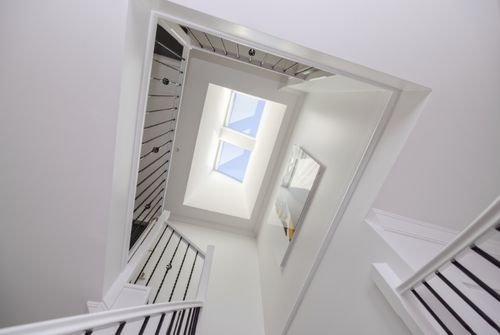Proper ventilation is critical to creating a healthy indoor environment. Whether in the home or workplace, air quality has a profound impact on the well-being and productivity of occupants. Poor ventilation can contribute to a range of health issues, including respiratory problems, headaches, fatigue, and exacerbated allergies. As awareness about indoor air quality rises, many are looking for effective ventilation solutions to ensure they are breathing clean, fresh air.
Why Ventilation is Important
Ventilation involves the exchange of indoor air with fresh outdoor air, which helps to remove indoor pollutants such as moisture, carbon dioxide, and volatile organic compounds (VOCs). Without proper ventilation, these contaminants can accumulate, leading to poor air quality and health risks. Additionally, modern buildings are designed to be more airtight for energy efficiency, which can unintentionally trap pollutants indoors, further emphasizing the need for good ventilation systems.
Types of Ventilation Systems
-
Natural Ventilation
Natural ventilation is the simplest form of ventilation, relying on the movement of air through windows, doors, vents, and other openings. It is cost-effective and energy-efficient, but its effectiveness depends on factors like outdoor weather conditions, the layout of the building, and the availability of openings for air circulation. While natural ventilation can be sufficient in mild climates, it may not provide adequate airflow in areas with high pollution or extreme weather.
-
Mechanical Ventilation
Mechanical ventilation systems use fans and ducts to draw in fresh air from outside and expel stale indoor air. This type of ventilation is more controlled than natural ventilation and is especially beneficial in buildings with limited natural airflow or in urban environments with poor outdoor air quality. Mechanical systems come in different types:
-
Exhaust Ventilation: This system removes indoor air using exhaust fans placed in areas like kitchens and bathrooms, drawing fresh air through openings in the building’s exterior. It is often used in homes to expel moisture and odors.
-
Supply Ventilation: A supply ventilation system brings fresh air into the building while allowing stale air to escape through vents and openings. These systems are commonly used in workplaces to regulate air quality.
-
Balanced Ventilation: A balanced system simultaneously supplies fresh air and exhausts stale air. This is ideal for maintaining consistent airflow and ensuring that the indoor air remains clean and fresh.
-
-
Heat Recovery Ventilation (HRV) and Energy Recovery Ventilation (ERV)
Both HRV and ERV systems are designed to provide fresh air while maintaining energy efficiency. These systems exchange heat between incoming and outgoing air, which helps to reduce the need for heating or cooling. HRVs are effective in cold climates, while ERVs are more suitable for humid environments, as they also exchange moisture between the incoming and outgoing air streams. Both systems contribute to reducing energy consumption while improving indoor air quality.
Key Considerations for Healthy Ventilation
-
Air Quality Monitoring:
Before implementing any ventilation solution, it’s important to monitor indoor air quality. Tools such as air purifiers, CO2 sensors, and VOC detectors can help identify harmful pollutants and measure the effectiveness of ventilation systems. Understanding the levels of pollutants helps to tailor the right ventilation solution to specific needs.
-
Air Filtration:
Filtration is an essential aspect of ventilation. High-efficiency particulate air (HEPA) filters and activated carbon filters are effective at removing airborne contaminants such as dust, pollen, mold spores, and VOCs. Homes and offices with sensitive individuals (e.g., those with asthma or allergies) should consider integrating air filtration into their ventilation systems.
-
Humidity Control:
Excess humidity can lead to the growth of mold and mildew, which can trigger respiratory issues. Humidity levels should ideally be kept between 30% and 50%. Dehumidifiers, in combination with an appropriate ventilation system, can help control moisture levels in damp areas like basements and bathrooms.
-
Regular Maintenance:
Ventilation systems require regular maintenance to ensure they are functioning properly. Air filters should be replaced periodically, and ducts and vents should be cleaned to prevent the buildup of dust, dirt, and mold. Regular servicing of mechanical systems ensures that they continue to operate efficiently, providing the best air quality possible.
Ventilation Solutions for Homes
For residential spaces, proper ventilation can be achieved by:
-
Installing Windows and Vents: Incorporating windows that can be opened and closing vents in specific areas to encourage air circulation. Ceiling fans can also help with airflow.
-
Using Exhaust Fans: Installing exhaust fans in kitchens and bathrooms helps remove excess moisture and cooking odors, improving indoor air quality.
-
HRV/ERV Systems: For homes in colder climates or places with high energy costs, HRV/ERV systems provide a great solution by ensuring the flow of fresh air without wasting energy on heating or cooling.
Ventilation Solutions for Workspaces
Workplaces, particularly those with large numbers of employees, require effective ventilation solutions for both health and productivity. A few options include:
-
Centralized HVAC Systems: Larger office buildings typically rely on heating, ventilation, and air conditioning (HVAC) systems that are equipped with air filtration and can be regulated for temperature and humidity control.
-
Ventilation in Shared Spaces: In communal areas like kitchens and break rooms, installing exhaust fans and making sure windows can open helps to promote airflow and reduce indoor air pollutants.
-
Air Purifiers: In offices where there is high foot traffic and less access to natural airflow, adding standalone air purifiers can help reduce particulate matter and VOCs in the air.
Conclusion
Ventilation plays a key role in maintaining a healthy indoor environment in both homes and workplaces. Proper ventilation reduces the risk of indoor air pollution, minimizes the spread of illnesses, and enhances overall well-being. Whether through natural or mechanical means, ensuring good airflow in indoor spaces is vital for respiratory health and productivity. By carefully considering the specific needs of the space and investing in appropriate ventilation solutions, we can create cleaner, healthier, and more comfortable environments for all occupants.
